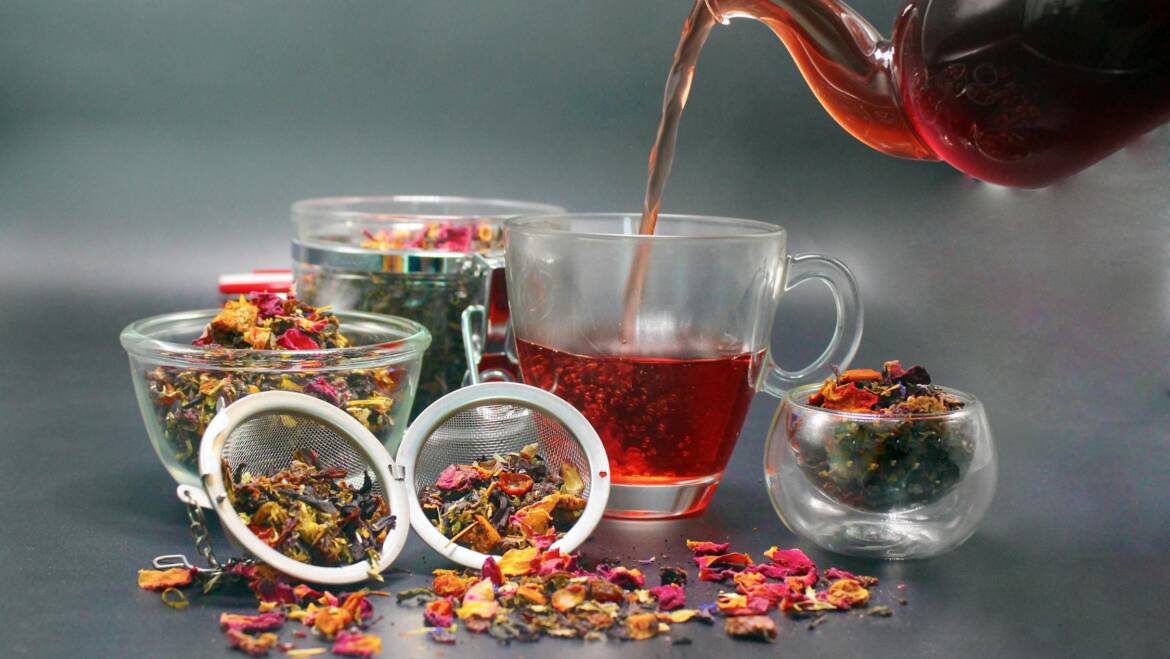Teas
Teas are one of the most beloved beverages around the world, offering a wide range of flavors, aromas, and health benefits. They are made by steeping the processed leaves, buds, or twigs of the Camellia sinensis plant in hot water. Here’s a brief overview of different types of teas and their benefits:
Types of Teas:
- Green Tea
- Description: Made from unoxidized leaves, green tea is known for its fresh, light flavor.
- Benefits: Rich in antioxidants, supports metabolism, improves brain function, and may aid in weight loss.
- Black Tea
- Description: Fully oxidized, black tea has a strong, bold flavor.
- Benefits: Contains antioxidants, boosts energy, supports heart health, and may improve gut health.
- Herbal Tea (Tisanes)
- Description: Not made from Camellia sinensis, but from herbs, flowers, and fruits. Examples include chamomile, peppermint, and hibiscus.
- Benefits: Caffeine-free, each variety offers unique health benefits, such as calming effects (chamomile) or digestive support (peppermint).
- Oolong Tea
- Description: Partially oxidized, oolong tea has a flavor profile between green and black tea.
- Benefits: Supports metabolism, aids in weight management, and may improve heart health.
- White Tea
- Description: Least processed, made from young leaves or buds. It has a delicate, mild flavor.
- Benefits: High in antioxidants, supports skin health, and may protect against certain diseases.
- Chai Tea
- Description: Black tea blended with spices like cinnamon, cardamom, ginger, and cloves. Often served with milk.
- Benefits: Combines the benefits of black tea with those of the spices, such as anti-inflammatory properties and digestive support.
Benefits of Teas:
- Antioxidants: Most teas are rich in antioxidants, which help combat oxidative stress and may reduce the risk of chronic diseases.
- Hydration: Drinking tea contributes to your daily fluid intake and can be a flavorful way to stay hydrated.
- Mental Alertness: Teas containing caffeine, like black and green teas, can enhance alertness and cognitive function.
- Calm and Relaxation: Herbal teas like chamomile and lavender are known for their calming effects, promoting relaxation and better sleep.
Culinary Uses:
- Hot Beverages: The most common way to enjoy tea is by brewing it hot, either plain or with added flavors like lemon, honey, or milk.
- Iced Tea: Brewed tea can be chilled and served over ice for a refreshing drink, often sweetened or flavored with fruits.
- Cooking and Baking: Tea can be used as an ingredient in recipes, such as matcha in desserts or chai spices in baked goods.
Storage Tips:
- Proper Storage: Keep tea in airtight containers away from light, heat, and moisture to preserve its freshness and flavor.
- Shelf Life: While tea doesn’t spoil, its flavor can diminish over time. For the best taste, use tea within six months to a year of purchase.
Teas offer a delightful combination of flavor and health benefits, making them a cherished beverage worldwide. Whether you prefer a robust black tea in the morning or a soothing herbal blend before bed, there’s a tea for every occasion and taste.

